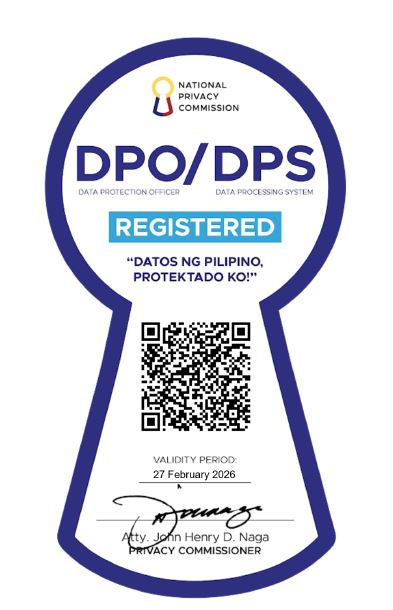DOST Balik Scientist Dr. Caldona: Surface Electrochemical Approaches May Save Materials and Equipment From Corrosion
By: Ella Vanesa Lopez
Corrosion, the silent killer in the metals and engineering industries, is a major concern worldwide. The good news is that this threat can actually be minimized, according to DOST Balik Scientist Dr. Eugene B. Caldona.
“Corrosion is a serious economic problem, and it takes its toll on national landmarks, works of art, historical artifacts, and businesses,” Dr. Caldona said during his talk. He added, “Corrosion is a difficult phenomenon to understand; it may seem simple, but the study of it is a difficult but interesting pursuit for everybody.”
Corrosion can be defined as the progressive and gradual deterioration of metals as a result of chemical or electrochemical reactions with their surroundings. As it gradually happens, more often than not, people become aware of it after it has already spread and caused significant problems.

Official poster of Dr. Eugene B. Caldona, DOST Balik Scientist, for his talk on “Surface Electrochemical Approaches to Evaluating Corrosion Preventive Materials”
Most businesses and industries heavily rely on machines and equipment that are made of metal. The fact that we reside in an archipelagic and tropical country makes us more susceptible to this issue. As corrosion attacks metals, it is no wonder that it causes catastrophic effects on the safety, health, and conservation of materials.
Fortunately, Dr. Caldona is here to assist people in protecting their investments.
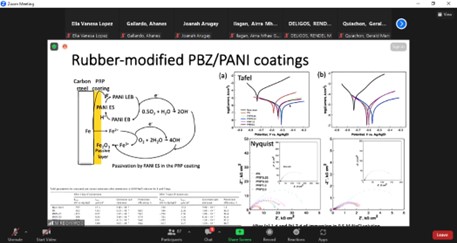
Dr. Caldona shared various techniques on how to minimize the damage of corrosion
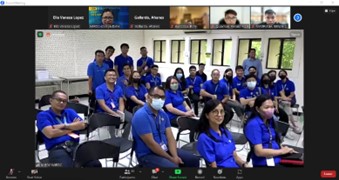
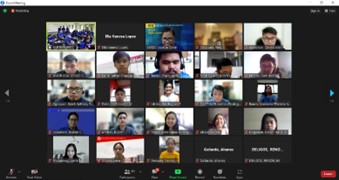
Attendees of the seminar “Surface Electrochemical Approaches to Evaluating Corrosion Preventive Materials” by Dr. Eugene Caldona held on July 11, 2023.
A scientific solution to a scientific problem
Dr. Eugene B. Caldona has a dedicated team researching the development of new groups of corrosion-preventive materials and the use of electrochemical approaches to evaluating corrosion-preventive materials.
He shared various techniques to fight the damage of corrosion. The most widely used is the organic polymeric coating - it functions as a physical barrier that prevents the metal surface from coming into contact with the corrosive environment. Paints, urethane, epoxy, acrylic, and silicone are considered organic coatings.
Dr. Caldona did point out, however, that an organic coating is not an impenetrable barrier as substances, such as water and oxygen, can still pass through and cause damage.
Aside from organic coatings, he also introduced five electrochemical techniques, namely: Open Circuit Potential, Scanning Electrochemical Microscopy, Potentiodynamic Polarization, Electrochemical Noise, and Electrochemical Impedance Spectroscopy. Among these five techniques, the most highlighted is the quantitative technique known as Electrochemical Impedance Spectroscopy (EIS), as the anti-corrosion effectiveness of protective coatings can be quickly evaluated using the EIS. Further, EIS measurements deliver reliable data quickly, enabling the prediction of the coatings' long-term performance.
Knowing which technique to use is the key to successful corrosion protection, as each has its own advantages and disadvantages. Dr. Caldona reminded the attendees to select based on their target objectives. For business owners whose bread and butter are their machines and equipment, knowing these techniques will surely be handy.
DOST-MIRDC, as the sole government agency that caters to the requirements of the metals, engineering, and allied industries, is dedicated to improving the quality and performance of the industry's products, processes, and operations through its testing and calibration services. Companies may avail of the Center’s corrosion testing service to determine the corrosion resistance of coatings used in their metal products.
The recently concluded seminar is the second of the seminar series by Dr. Caldona for the DOST Balik Scientist Program. For more details on his next seminars, stay tuned to DOST-MIRDC’s Facebook page.
DOST Balik Scientist Gives Scientific Paper Writing Skills of Researchers a Boost
by Faith P. Macatangay
Click here to download a PDF copy of this file.
“The aim of writing is not only to make yourself understood but to make sure you are not misunderstood,” said Dr. Eugene B. Caldona.
This was said during the seminar entitled, ‘“Writing and Publishing a Scientific Paper,” conducted by Dr. Caldona on July 7, 2023.
Dr. Caldona first emphasized the most important reason for conducting research and writing a scientific paper is to build up scientific competence; this will allow the researcher to know about the relevant methods and understand research publications in their area of expertise.
Clear communication, according to Dr. Caldona, is a requirement in conducting research, and writing scientific papers is the best way of communicating research.
Writing is often viewed as a difficult task. As an encouragement, Dr. Caldona pointed out the possible outcome of writing scientific papers, he said “Writing can be fun. The fruits of your labor can have substantial benefits if you transform it into writing. Find inspiration.”
Sharing of ideas is a way to achieve immortality
Submitting a research paper for publication is to share ideas. Thus, a published paper will remain forever attached to the researcher’s name.
Dr. Caldona laid down tips on where o submit scientific papers, the importance of becoming aware of the predatory journals that only seek profit, and to not disseminate high-quality research. Moreover, he reminded the participants about the misconduct and breaches in writing and publishing papers.
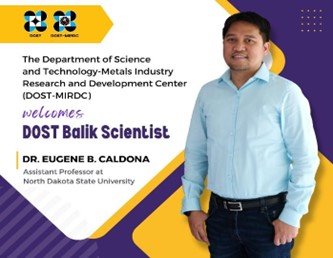
Before concluding his seminar, Dr. Caldona left his audience with some motivational words, “There is a researcher within all of us. It is waiting to be unleashed. When that happens, you should be ready with your diligence and patience.”
The Balik-Scientist
Dr. Caldona is an Assistant Professor in the Department of Coatings and Polymeric Materials at North Dakota State University (NDSU), USA – one of the premier coatings institutions in the world.
He is currently engaged as a Short-term Balik Scientist under the DOST Balik Scientist Program (DOST-BSP), with DOST-Metals Industry Research and Development Center (DOST-MIRDC) as the host agency. Dr. Caldona will assist in the Center's surface engineering research and development program.
The recently concluded seminar is part of the online seminar series about materials engineering that will be conducted this month of July. We invite researchers from the academe, industry, and aspiring individuals who are interested in the said fields to avail of these free seminars.
To be updated on the training and seminar schedules by Dr. Caldona, visit DOST-MIRDC's Facebook page.
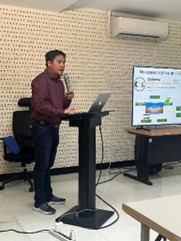

The resource person, Dr. Eugene B. Caldona, discusses to the onsite and online participants.
Additional Metals and Engineering Innovation Centers (MEICs) to Rise Soon in 10 More Regions in the Country
By Kai H. Negado
If you think there is so much more that the countryside can do, then you’re right.
The regions hold so much potential when it comes to innovation. That is why the Department of Science, through the DOST-Metals Industry Research and Development Center (DOST-MIRDC), is placing major investments in the regions.
Following the success of the establishment of the first batch of Metals and Engineering Innovation Centers (MEIC) in Regions 1, 2, 3, 10, and CAR, the DOST-MIRDC further solidified its commitment in bringing science, technology, and innovation closer to the people by signing into an agreement to establish MEICs in more regions in the country.
The 2nd National Metals and Engineering Conference (NMEC) on June 22, 2023, held the ceremonial signing of the Memorandum of Agreement between the DOST-MIRDC, DOST Regional Offices, and state universities and colleges (SUC) from regions 4A, 4B, 5, 6, 7, 8, 9, 11, 12, and 13.
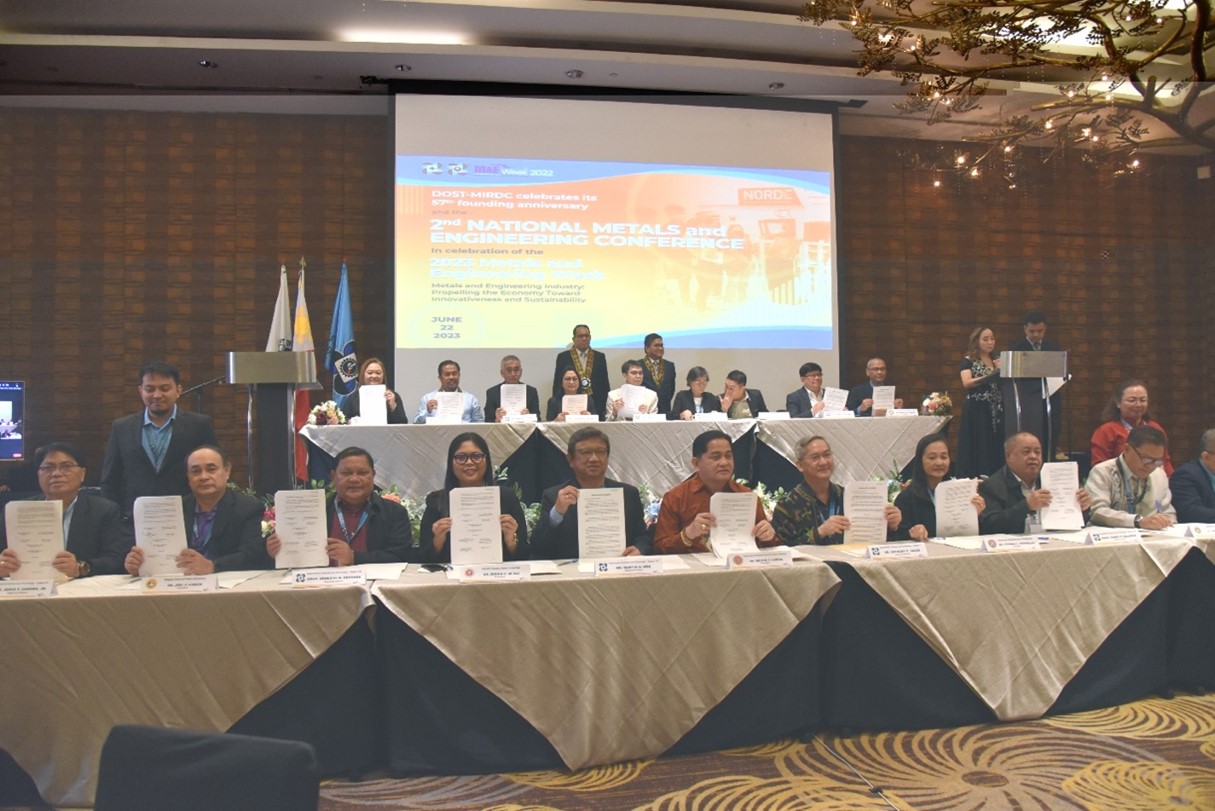
DOST-MIRDC top management, DOST Regional Directors, and SUC Presidents during the ceremonial signing of the memorandum of agreement for the MEIC batch two project.
In his message of commitment, Batangas State University’s President Dr. Tirso A. Ronquillo, whose university is part of the MEIC Batch 2 project, commented on the metals and engineering (M&E) industry as a great contributor to the country’s GDP and how the MEIC is addressing the industry’s demand in capacitating its workforce. “As part of the MEIC project, SUCs are now capable of contributing to this growth by posturing a highly skilled and knowledgeable workforce, ready to take on the challenges and opportunities of the future,’ said Dr. Ronquillo. “The technological disruptions and trends we see emerging in the global metals industry are guiding our mission,” he added.
The MEICs to be established will be operated by the host SUCs, it will enable partner SUCs to design and fabricate machineries and equipment which support the requirements of the various micro, small, and medium enterprises (MSME) in their respective regions - strengthening the country’s research and development outputs that will directly benefit our local industries.
For SUCs and MSMEs who are interested in availing of DOST-MIRDC or MEIC services, you may send an email to This email address is being protected from spambots. You need JavaScript enabled to view it..
Title: Value Analysis/Value Engineering for Die and Mold Industry
Date: August 1-3, 2023
Time: 8:00am - 4:00pm
Reservation Link: https://bit.ly/Res_VA_VE_Mold_Industry_Aug1-3_8-4pm
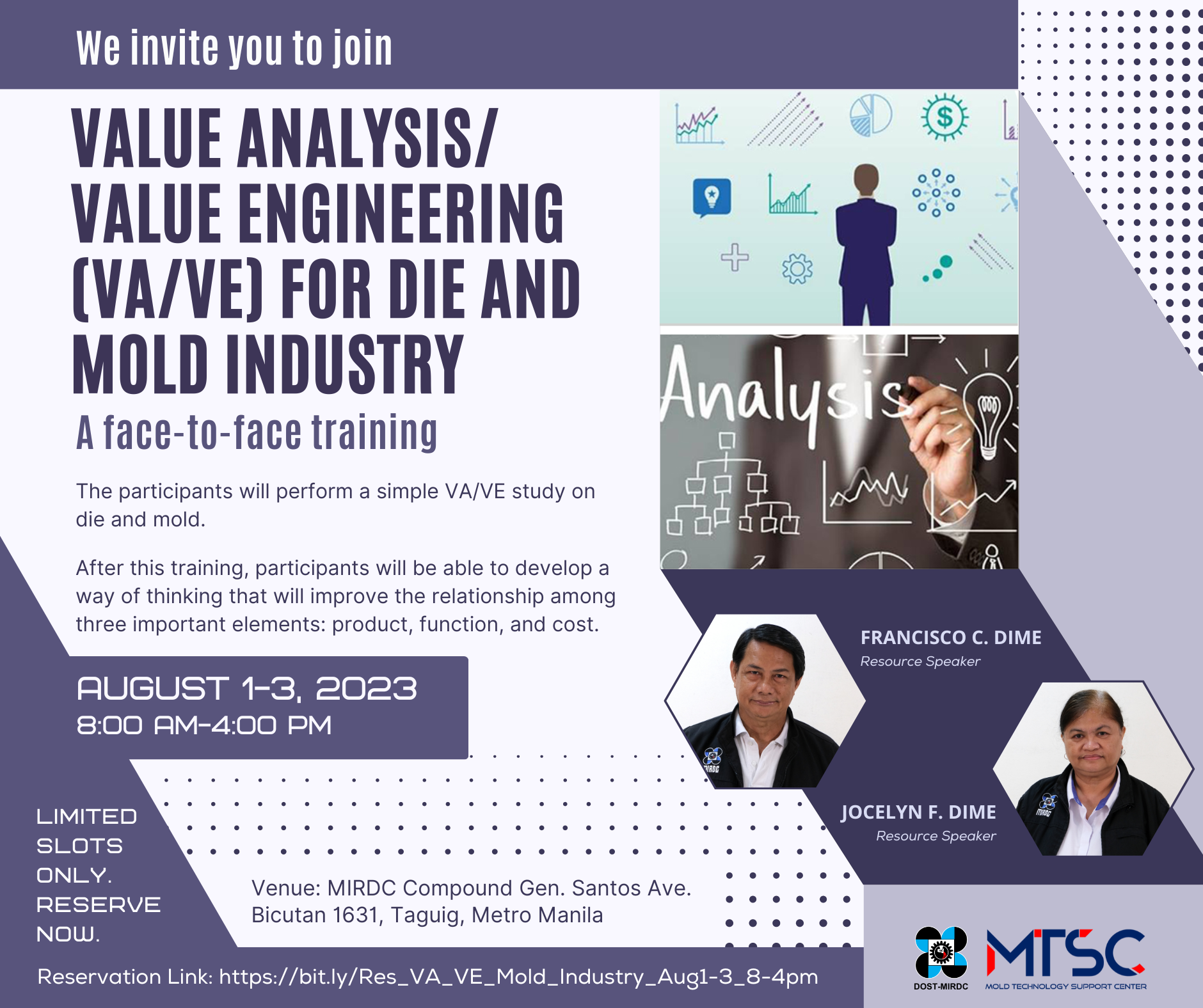
Province of Cotabato Eyes the DOST’s Hybrid Electric Road Train as the Province’s Alternative Mode of Transportation
by Kai H. Negado
The Hybrid Electric Road Train (HERT), home-grown mass transportation technology, is soon going to be used in the province of Cotabato.
The provincial government of Cotabato signed a Memorandum of Agreement with the Department of Science and Technology-Metals Industry Research and Development Center (DOST-MIRDC) and the DOST Regional Office XII on July 3, 2023 at Tuburan Hall, Amas, Kidapawan City on the adoption of the HERT.

L to R: DOST XII Regional Director Sammy P. Malawan, Cotabato Vice Governor-elect Efren Piñol, DOST Undersecretary Sancho A. Mabborang, Cotabato Governor Emmylou J. Taliño-Mendoza, and DOST-MIRDC Deputy Director for Technical Services Jonathan Q. Puerto as DOST-MIRDC Executive Director Robert O. Dizon’s official representative during the MOA signing.
As a prelude to Cotabato’s adoption and utilization of the HERT, the provincial government, DOST XII, and DOST-MIRDC will conduct test runs of the HERT along the roads of Cotabato, with options to re-engineer or modify existing roads to ensure its smooth operation in the area. DOST-MIRDC will train identified personnel from the province to ensure the sustainability of operating and maintaining the HERT.
The HERT is specially designed as an alternative to mass transport systems - its joined buses with a total length of 45 meters can carry 240 passengers. The HERT is powered by a combination of diesel fuel and electric-powered batteries, a feature that results in the reduction of emissions. It also features a regenerative brake system, which makes this technology all the more environmentally friendly.
The HERT will be adopted for use by the provincial government of Cotabato after the completion of the dry run, training, and technology transfer. As such, the HERT is expected to be seen traversing Cotabato’s roads by 2024.
In addition, a task Force will be created to conduct research on the socio-economic impact of the adoption of the HERT to the province of Cotabato.
The DOST-MIRDC shares with the metals industry a vision of enhanced productivity and competitiveness. The HERT and its adoption by the provincial government of Cotabato is a testament to the vital role of the metals industry in addressing pressing issues and boosting the economy through science, technology, and innovation.
To be updated on all technologies developed by the DOST-MIRDC, visit the Center’s website, www.mirdc.dost.gov.ph and DOST-MIRDC facebook page.


